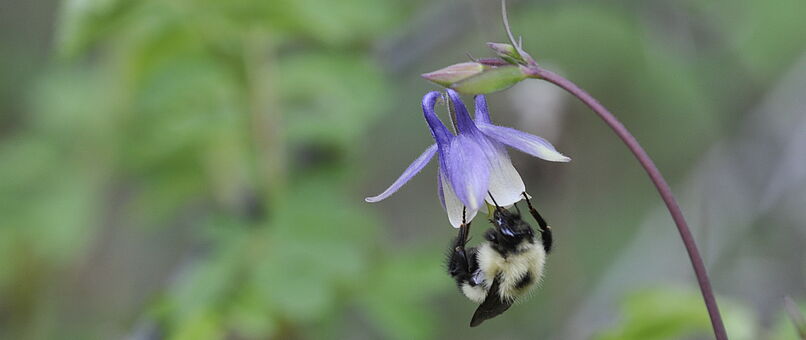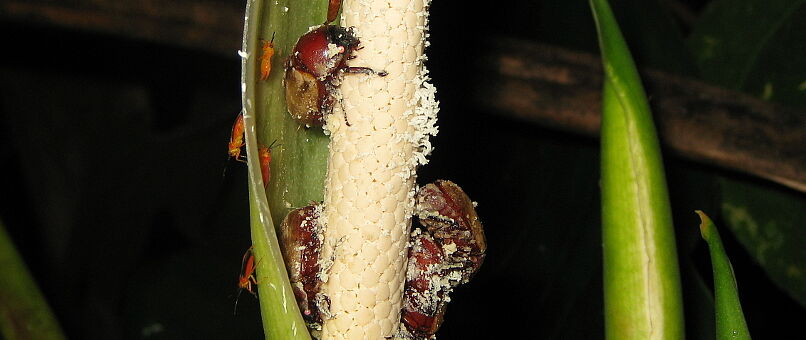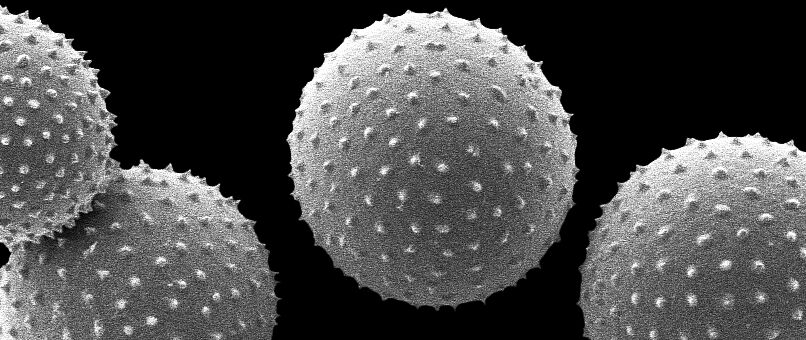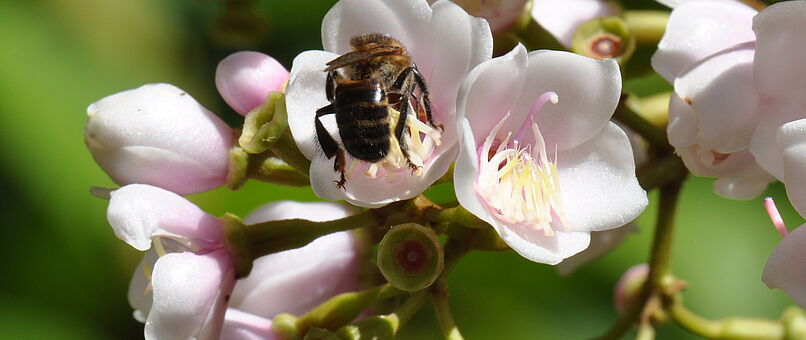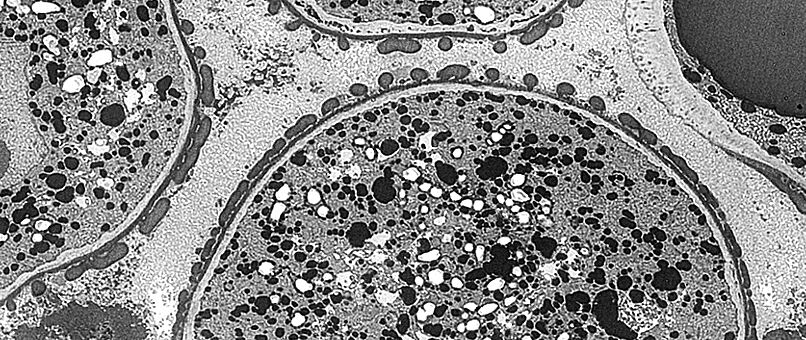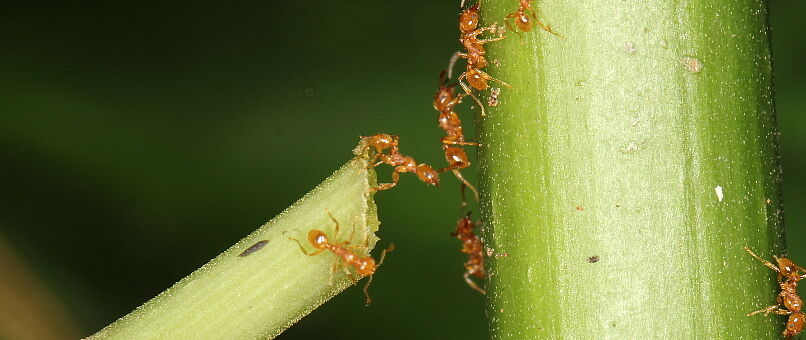Ulrich, S., Purgina, C., Bouchal, J. M.
, Geier, C., & Grimsson, F. (2026).
The use of transmission electron microscopy when investigating fossil angiosperm pollen: A review and suggestions for future applications.
Review of Palaeobotany and Palynology,
344, Article 105423.
https://doi.org/10.1016/j.revpalbo.2025.105423
Geier, C., Engel, M. S., Bouchal, J. M.
, Ulrich, S., Schönenberger, J., Uhl, D., Wappler, T., Wedmann, S., Boudet, L.
, & Grimsson, F. (2025).
24 million years of pollination interaction between European linden flowers and bumble bees.
New Phytologist,
248(4), 2111-2127.
https://doi.org/10.1111/nph.70531
Geier, C., Ulrich, S., Bouchal, J. M.
, Zetter, R., Ngô Muller, V., Jacobs, B. F., Uhl, D.
, & Grimsson, F. (2025).
Morphology and ultrastructure of Tilioideae pollen: how to differentiate Craigia, Mortoniodendron, and Tilia.
Botanical studies,
66(1), Article 15.
https://doi.org/10.1186/s40529-025-00463-1
Emelianova, K.
, Hawranek, A.-S., Eriksson, M. C., Wolfe, T. M.
, & Paun, O. (2025).
Ecological divergence of sibling allopolyploid marsh orchids is associated with species specific plasticity and distinct fungal communities.
The Plant journal : for cell and molecular biology,
121(4), Article e70001.
https://doi.org/10.1111/tpj.70001
Chartier, M., Kopper, C., Münch, M., Messinger Carril, O., Díaz-Infante, S.
, Lachmayer, M., Ulrich, S., Wilson, J. S.
, Schönenberger, J., & von Balthazar, M. (2025).
Pollination biology and secondary pollinators in seven North American Aquilegia species.
International Journal of Plant Sciences,
186(1), 20-37.
https://doi.org/10.1086/733068
Wang, M. Z., Belmonte-Lopes, R., Pan, T., Ahmed, S. A., Rodrigues Lustosa, B. P., Quan, Y., Al-Hatmi, A. M. S., Mayer, V.
, Voglmayr, H., Grisolia, M. E., de Souza Lima, B. B. J. F., Vicente, V. A., Zhou, S. Q., Cao, Y., Kang, Y. Q., & de Hoog, G. S. (2025).
A new family of ant-associated fungi in Chaetothyriales.
STUDIES IN MYCOLOGY,
110(1), 111-144.
https://doi.org/10.3114/sim.2024.110.02
Pan, A. D., Jacobs, B. F., Currano, E. D., Gostel, M. R., Lowry, II, P. P., Plunkett, G. M., Hoffmann, J.
, Geier, C., & Grimsson, F. (2025).
Fossil Astropanax Seem. (Araliaceae) from the early Miocene (21.73 Mya) Mush Valley plant assemblages of Ethiopia.
Botanical Journal of the Linnean Society,
209(3), 280-302. Article boaf011.
https://doi.org/10.1093/botlinnean/boaf011
Malailkanok, P.
, Grimsson, F., Zetter, R., Grote, P. J., Denk, T., & Phuphumirat, W. (2025).
Marked Ericales diversity in late Oligocene–Early Miocene palynofloras from northern Thailand suggests stratified mountain forests.
Journal of Systematics and Evolution,
n/a(n/a), Article jse.70010.
https://doi.org/10.1111/jse.70010
Dirr, L., Bastl, K., Bastl, M., Berger, U. E., Bouchal, J. M., Kofol Seliger, A., Magyar, D., Ščevková, J., Szigeti, T.
, & Grimsson, F. (2025).
The Ragweed Finder: A Citizen-Science Project to Inform Pollen Allergy Sufferers About Ambrosia artemisiifolia Populations in Austria.
Applied Sciences,
15(22), Article 12333.
https://doi.org/10.3390/app152212333
Wuttke, M., Poschmann, M. J., Wappler, T., Bouchal, J. M.
, Geier, C., Ulrich, S., & Grimsson, F. (2024).
Pollen-feeding in a giant pelobatid tadpole from the late Oligocene of Enspel, Germany.
Palaeobiodiversity and Palaeoenvironments,
104(4), 999-1026. Article 104831.
https://doi.org/10.1007/s12549-024-00603-8
Geier, C., Engel, M. S., Bouchal, J. M.
, Ulrich, S., Grimsson, F., Wedmann, S., & Wappler, T. (2024).
The earliest large carpenter bee (Xylocopa) and its adhering pollen (Araliaceae, Theaceae).
Palaeobiodiversity and Palaeoenvironments,
104(4), 949-962. Article s12549-024-00604-7.
https://doi.org/10.1007/s12549-024-00604-7
Barreto, E., Boehm, M. M. A., Ogutcen, E., Abrahamczyk, S., Kessler, M., Bascompte, J.
, Dellinger, A. S., Bello, C., Dehling, D. M., Duchenne, F., Kaehler, M., Lagomarsino, L. P., Lohmann, L. G., Maglianesi, M. A., Morlon, H., Muchhala, N., Ornelas, J. F., Perret, M., Salinas, N. R., ... Graham, C. H. (2024).
Macroevolution of the plant–hummingbird pollination system.
Biological Reviews,
99(5), 1831-1847.
https://doi.org/10.1111/brv.13094
Dirr, L., Bastl, K., Bastl, M., Bouchal, J. M., Berger, U. E.
, & Grimsson, F. (2024).
Crowd-sourced-Symptomdaten bei Pollenallergie: Erprobung eines neuen Studiendesigns zur Bewertung der Wirksamkeit von Nahrungsergänzungsmitteln.
Allergo Journal,
33(6), 39-49.
https://doi.org/10.1007/s15007-024-6340-z
Dirr, L., Bastl, K., Bastl, M., Bouchal, J. M., Berger, U. E.
, & Grimsson, F. (2024).
Crowd-sourced symptom data in pollen allergy: testing a novel study approach for assessing the efficacy of food supplements.
Allergo Journal International,
33, 180-189.
https://doi.org/10.1007/s40629-024-00283-y
Geier, C., Bouchal, J. M.
, Ulrich, S., Uhl, D., Wappler, T., Wedmann, S.
, Zetter, R., Schönenberger, J., & Grimsson, F. (2024).
Potential pollinators and paleoecological aspects of Eocene Ludwigia (Onagraceae) from Eckfeld, Germany.
Palaeoworld,
33(4), 1079-1104.
https://doi.org/10.1016/j.palwor.2023.07.003
Reginato, M., Ordónez-Parra, C. A., Messeder, J. V. S., Brito, V. L. G.
, Dellinger, A., Kriebel, R., Marra, C., Melo, L., Cornelissen, T., Fuzessy, L., Sperotto, P., Calderón-Hernández, M., Guerra, T. J.
, Kopper, C., Mancipe-Murillo, C., Pizo, M. A., Posada-Herrera, J. M., Hasui, É., Silva, W. R., & Silveira, F. A. O. (2024).
MelastomaTRAITs 1.0: A database of functional traits in Melastomataceae, a large pantropical angiosperm family.
Ecology,
105(6), Article e4308.
https://doi.org/10.1002/ecy.4308
Helmstetter, A. J., Méndez, M.
, Schönenberger, J., Burgarella, C., Anderson, B.
, von Balthazar, M., Billiard, S., de Boer, H., Cros, J., Delecroix, P.-A., Dufay, M., Pannell, J. R., Bianchi, D. S., Schoen, D. J., Vallejo-Marin, M., Zenil-Ferguson, R., Sauquet, H., Glémin, S., & Käfer, J. (2024).
Pollination and mating traits underlie diverse reproductive strategies in flowering plants. bioRxiv. Advance online publication.
https://doi.org/10.1101/2024.02.26.582019
Dellinger, A. S., Lagomarsino, L., Michelangeli, F.
, Dullinger, S., & Smith, S. D. (2024).
The Sequential Direct and Indirect Effects of Mountain Uplift, Climatic Niche, and Floral Trait Evolution on Diversification Dynamics in an Andean Plant Clade.
Systematic Biology,
73(3), 594-612. Article syae011.
https://doi.org/10.1093/sysbio/syae011
Gutermann, W., Jang, T. S., Kästner, A., Prehsler, D., Reich, D.
, Berger, A., Flatscher, R., Gilli, C.
, Hofbauer, M., Lachmayer, M., Sander, R., Sonnleitner, M., & Mucina, L. (2024).
Thliphthisa sapphus (Rubiaceae, Rubieae), a new species from Lefkada (Ionian Islands, Greece) and its ecological position.
PhytoKeys,
241, 65-79. Article 119144.
https://doi.org/10.3897/phytokeys.241.119144

